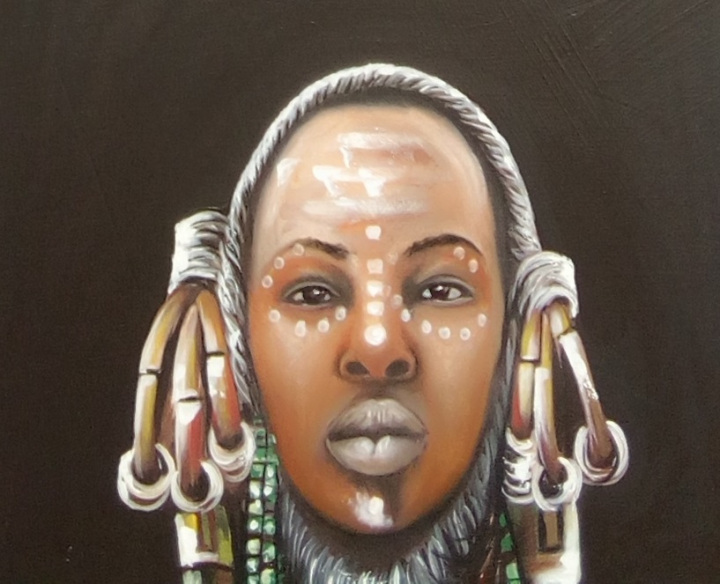
Healthy Living
The Transformative Role of Technology in Art:
A Comprehensive Exploration
Originally, the hula was a religious dance performed by trained dancers before the king or ordinary people to promote fecundity, to honor the gods, or to praise the chiefs.
The Transformative Role of Technology in Art: A Comprehensive Exploration
May 23, 2025
Published by Morris Neilson-Ruiz
Technology has become an inseparable partner in the evolution of artistic expression, fundamentally altering how art is created, experienced, and distributed. From the earliest cave paintings to today's AI-generated masterpieces, the symbiotic relationship between art and technology has continuously pushed the boundaries of human creativity. This exploration delves into the multifaceted ways technology shapes contemporary art, examining historical developments, current innovations, and future possibilities that are redefining artistic practice.
Historical Foundations of Technology in Art
The intersection of art and technology is not a modern phenomenon but rather a continuum that spans human history. Early technological advancements like the invention of the paintbrush and canvas enabled artists to create previously impossible works, while the printing press revolutionized art reproduction and distribution. The 19th century saw photography emerge as a disruptive technology that challenged traditional notions of artistic representation, forcing painters to explore new directions that ultimately led to movements like Impressionism.
The 20th century marked a significant turning point, with technology transitioning from being merely a tool to becoming an integral medium of artistic expression. Andy Warhol's pioneering use of silk-screen printing in the 1960s demonstrated how industrial techniques could be harnessed for creative purposes. Few know that Warhol was also an early digital art pioneer, creating drawings on an Amiga computer in 1985—works that were lost and rediscovered in 2014. This historical precedent shows how artists have consistently adapted emerging technologies to expand their creative vocabulary.
The 1960s also saw collaborative efforts between artists and engineers, such as when New York artists, including John Cage and Robert Rauschenberg, worked with Bell Laboratories scientists to create groundbreaking technology-infused performances. These early experiments laid the foundation for what would become new media art, establishing technology as a legitimate artistic medium rather than just a production tool.
Emergence of Digital Art Forms
The digital revolution has spawned entirely new art forms that challenge traditional definitions of artistic practice. Digital painting, 3D modeling, and algorithmic art have become established mediums, offering artists unprecedented creative freedom. Software like Photoshop and Procreate has created a hybrid space where traditional painting techniques merge with digital capabilities. Contemporary artists like Eric Standley have pushed these boundaries further by using laser-cutting technology to create intricate stained glass-like works from hundreds of layered paper sheets.
New media art has particularly flourished, incorporating elements like video, animation, and interactive installations. These forms create immersive experiences that engage viewers in ways traditional static art cannot. Projects like Chris Milk's "Treachery of the Sanctuary"—a three-screen interactive installation exploring the creative process through viewer shadows transformed into digital birds—demonstrate how technology can facilitate profound audience participation.
Virtual and Augmented Reality
VR and AR technologies have opened new dimensions in artistic expression, creating fully immersive environments that dissolve the boundary between artwork and viewer. Google's Tilt Brush allows artists to "paint" in three-dimensional space, creating sculptures of light that defy physical constraints. Performance artist Marina Abramović has adapted her practice to VR with works like "The Life," where viewers enter a digital representation of her artistic world and interact with her virtual presence.
Augmented reality art transforms public spaces into interactive canvases, overlaying digital creations onto physical environments. This fusion creates dynamic artworks that challenge our perception of reality and democratize art access by bringing it outside traditional gallery settings. The collective Umbrellium's "Assemblance" project exemplifies this, using laser beams that leave colored marks on surfaces and people, creating collaborative ephemeral artworks.
Democratization and Accessibility
Technology has fundamentally altered who can create and access art, breaking down traditional barriers to participation. Digital tools have made art creation more accessible, enabling anyone with a smartphone or computer to experiment with artistic expression. This democratization has led to an explosion of diverse voices and styles in the art world, challenging established hierarchies and norms.
Social media platforms like Instagram and TikTok have revolutionized art distribution, allowing artists to bypass traditional gatekeepers and connect directly with global audiences. This shift has been particularly empowering for emerging artists, as seen in the case of digital artist Beeple (Mike Winkelmann), who gained fame through online platforms before selling an NFT for $69 million at Christie's.
The internet has also transformed art consumption, providing instant access to high-resolution images of artworks from museums worldwide. Virtual museum tours and online collections have made art appreciation more inclusive, reaching audiences who might never visit physical institutions. This accessibility extends to educational resources, with countless tutorials and courses available online for aspiring artists at all skill levels.
Artificial Intelligence and the Future of Creativity
Artificial intelligence represents one of the most provocative technological developments in contemporary art. Machine learning algorithms like those used by Midjourney can analyze vast datasets of existing art to generate new works that blend learned styles and concepts. This capability raises fascinating questions about the nature of creativity and authorship—when an AI system creates a painting, who is the artist: the programmer, the AI, or some combination of both?
Some artists are embracing AI as a collaborative tool rather than a replacement for human creativity. British artist Harold Cohen's AARON program, developed in the late 20th century, was an early example of this partnership—Cohen worked with the AI as a creative collaborator that produced original abstract paintings. Contemporary artists are building on this approach, using AI to automate routine tasks, generate novel ideas, or explore creative possibilities beyond human imagination.
Ethical Considerations
The rise of AI art has sparked intense debate about originality, copyright, and the value of human creativity. When an AI system creates art based on thousands of existing works, can the output be considered truly original? Legal questions abound regarding ownership of AI-generated works, with current copyright frameworks struggling to accommodate non-human creators.
There are also concerns that AI might devalue human artistic labor or homogenize creative expression by favoring algorithmically successful styles. However, many argue that AI lacks the subjective human experiences that inform truly original art, suggesting it will complement rather than replace human artists. As AI technology evolves, the art world will need to develop new frameworks to address these ethical and legal challenges.
Blockchain and New Economic Models
Blockchain technology, particularly through Non-Fungible Tokens (NFTs), has introduced radical changes to how art is owned, traded, and valued. NFTs create verifiable digital scarcity, allowing digital artists to sell unique versions of their work in ways comparable to physical art markets. This development has created new revenue streams for digital artists who previously struggled to monetize their work effectively.
However, the NFT boom has also raised significant concerns, particularly regarding the environmental impact of blockchain technology's energy consumption. Additionally, the ease of digital reproduction has intensified copyright challenges, with artists frequently finding their work minted as NFTs without permission. Despite these issues, blockchain's potential to authenticate artworks and track ownership transparently continues to attract interest from artists and collectors alike.
Technology's Impact on Traditional Art Forms
Rather than rendering traditional art forms obsolete, technology has often revitalized them through innovative hybrids. Many painters now work digitally before translating their creations to physical canvases, while sculptors use 3D printing to realize forms impossible to craft by hand. Digital tools have also enhanced traditional art preservation through advanced archiving techniques and restoration technologies.
Photography has been particularly transformed by digital technology, with smartphone cameras putting powerful creative tools in billions of pockets worldwide. Artists like Kim Keever have pushed photographic boundaries by using technology in unconventional ways—Keever creates mesmerizing abstract images by photographing paint drizzled into a 200-gallon fish tank. These innovations demonstrate how technology can expand rather than replace traditional mediums.
Challenges and Criticisms
Despite its many benefits, technology's integration with art has not been without controversy. Some argue that digital art lacks the tactile authenticity and aura of physical artworks. Others worry that constant technological innovation might prioritize novelty over depth, or that the ease of digital creation could flood the market with mediocre work.
The performing arts face particular challenges from technology, with studies showing that mobile devices create significant disruptions during live performances. There are concerns that digital entertainment alternatives are competing with traditional arts for audience attention, potentially diminishing the communal experience of live events. Some predict that shrinking attention spans may make longer artistic works increasingly problematic.
However, many arts organizations are adapting creatively to these challenges. Some theaters now provide scripts to audience members using "tweet seats," embracing rather than resisting technology's role in performance. This adaptive approach suggests that technology's challenges can become opportunities for innovation when approached thoughtfully.
Educational and Cognitive Impacts
Technology's influence extends to art education and the cognitive benefits of artistic practice. Digital tools have made art instruction more accessible through online tutorials and virtual classrooms. Interestingly, neuroscience research suggests that engaging with visual arts activates complex neural networks involving perception, higher cognition, and motor functions. This finding implies that digital art creation might offer similar cognitive benefits to traditional art-making.
Art education has also benefited from technology's ability to demonstrate concepts visually and interactively. Virtual reality can transport students to historical art contexts, while augmented reality can overlay instructional information onto physical artworks. These technologies are particularly valuable for visual learners and can help bridge the gap between art and science education.
Future Directions
As technology continues advancing at an exponential pace, its future impact on art promises to be even more transformative. Several key trends are likely to shape this evolution:
1. Extended Reality (XR): The convergence of VR, AR, and mixed reality will create increasingly seamless blends of physical and digital art experiences. Future artworks may exist simultaneously in multiple reality states, adapting to different viewing contexts.
2. Generative AI: More sophisticated AI systems will enable deeper human-machine creative collaborations. We may see AI systems that can understand and adapt to individual artistic styles, serving as personalized creative assistants.
3. Haptic Feedback: Emerging haptic technologies will add tactile dimensions to digital art, allowing viewers to "feel" virtual artworks through advanced feedback systems.
4. Neuroart: Brain-computer interfaces may enable direct neural creation and experience of art, bypassing traditional sensory channels altogether.
5. Sustainable Digital Art: As environmental concerns grow, we'll likely see the development of more energy-efficient blockchain alternatives and eco-conscious digital art practices.
These developments will continue to challenge our definitions of art and creativity while offering unprecedented expressive possibilities. However, the core human impulse to create and appreciate art will likely remain constant, even as its forms and mediums evolve.
Conclusion
The role of technology in art has progressed from supportive tool to creative partner, fundamentally expanding what art can be and how it functions in society. While this relationship presents challenges and raises important questions, it has undeniably enriched the artistic landscape by democratizing creation, enabling new forms of expression, and connecting artists with global audiences. As we look to the future, the continued integration of art and technology promises to further blur boundaries between physical and digital, human and machine, creator and audience. Rather than fearing these changes, the art world can embrace them as opportunities to reimagine creativity for a new era. The history of art shows that technological innovation has typically complemented rather than replaced traditional practices, suggesting that future art will likely feature a rich coexistence of old and new, physical and digital, human and technological. In this dynamic interplay lies the exciting future of artistic expression.
Art


